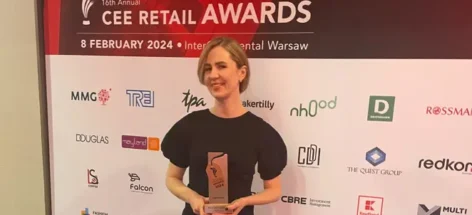6. November 2025
Reading Time: 6
Min.
news
The sale of real estate, that includes not only the seller’s buildings or structures, along with the land they are located on, raises tax-related concerns (excluding installations belonging to transmission enterprises). In such a situation, two key questions arise: do the third-party improvements constitute a part of the supply for the purposes of Value Added Tax (“VAT”)? If not, can this element of the transaction be subject to Tax on Civil Law Transactions (“TCLT”)?
The issue of ownership – what actually constitutes the subject of supply
The starting point is the provisions of the Act of 23 April 1964 – Civil Code (consolidated text – Journal of Laws of 16 June 2025, item 1071; “Civil Code”) regarding real estate and the sales agreement. According to art. 46 § 1 of the Civil Code, real estate (immovable property) consists of parts of the earth’s surface constituting a separate object of ownership (land), as well as buildings permanently attached to the land or their parts, if they constitute an object of ownership separate from the land. The legislator also defines the concept of a “component part of a thing” in art. 47 of the Civil Code. In turn, art. 48 of this Act states that component parts of the land include, among others, buildings and other installations permanently attached to it. Thus, Polish civil law adheres to the principle of superficies solo cedit, according to which what is located on the land constitutes its component part and, as a rule, belongs to the landowner. This means, that from a civil law perspective, as a rule, the owner of the land is the owner of buildings or structures located on it, regardless of who actually erected them. The Civil Code does, however, provide for exceptions to this principle, including those concerning transmission installations (nevertheless, in this article, we analyze the tax consequences of the supply of land developed with improvements belonging to third parties that are not transmission enterprises).VAT – scope of supply and economic control
According to art. 7(1) of the Act of 11 March 2004 on Value Added Tax (consolidated text – Journal of Laws of 16 June 2025, item 775, as amended; “VAT Act”), the supply of goods is understood as the transfer of the right to dispose of goods as an owner. The phrase “transfer of the right to dispose of as an owner”, within the meaning of tax law, does not refer directly to the right of ownership in the civil law sense. The essence of the supply of goods is transfer of actual control over the goods to the buyer, i.e., the ability to use them as an owner would. It is not about the formal transfer of legal title, but about transferring factual control over the item. In the case law of the Court of Justice of the European Union (“CJEU”), the concept of “economic ownership” appears. For example, in the judgment of 8 February 1990, case C-320/88 (Shipping and Forwarding Enterprise Safe), the CJEU clearly separated the definition of supply of goods from the civil law transfer of ownership. The CJEU stated that the supply of goods for VAT purposes should be understood as the transfer of the right to dispose of goods as an owner, even if there is no transfer of legal ownership. Similarly, in the judgment of 4 October 1995, case C-291/92 (Dieter Armbrecht), the CJEU stated that assessing whether a given activity is subject to VAT does not require the application of civil law regulations. In this case, the economic nature of the transaction should be of primary importance. In business practice, this means that when assessing whether a supply has occurred under the VAT Act, it is crucial to determine who actually holds economic control over the goods (e.g., a structure), particularly who decides on its purpose, use, or further disposal. Even if the sale results in a civil law transfer of ownership of a third-party’s (e.g., a lessee’s) property, the seller cannot make a “supply” of it in the sense of the VAT Act if they do not have economic control over it. The subject of the supply will only be that part of the real estate over which the seller exercises actual economic control. For example, in the case of selling land with a building located on it belonging to the vendor, the subject of the supply will be the land and the building. In the case of a supply of land with a structure belonging to a third-party, the subject of the supply will be the land, and the third-party’s structure only if the vendor (landowner) exercises economic control over it. This understanding is fully consistent with the approach held by tax authorities in individual tax rulings (see individual tax rulings by the Director of the National Tax Information (“DNTI”): of 2 June 2021, ref. no. 0113-KDIPT1-2.4012.242.2021.2.AJB; 15 May 2019, ref. no. 0112-KDIL4.4012.100.2019.2.JKU; and 23 August 2022, ref. no. 0114-KDIP1-1.4012.362.2022.1.MM). For example, in the individual tax ruling of 7 February 2025 (ref. no. 0111-KDIB3-2.4012.751.2024.2.AR), the DNTI stated that “(…) since the Seller does not have economic control over the Installations and Tenants’ Structures, nor is their owner, it cannot supply them within the meaning of Art. 7(1) of the VAT Act. Therefore, the subject of the supply within the meaning of the VAT Act will exclusively be the plots of land developed with the Buildings and Structures.” The correctness of this standpoint is also confirmed by the case law of administrative courts (see judgments of the Supreme Administrative Court (“SAC”) of 3 January 2019, ref. no. I FSK 1771/16, and of 10 January 2013, ref. no. I FSK 310/12).TCLT – is the transaction involving third-party improvements subject to TCLT?
To determine whether a given transaction is subject to TCLT, one must first analyze whether it is subject to VAT. According to art. 2(4) of the TCLT Act, activities subject to VAT are not subject to TCLT. An exception applies when the sale of real estate is exempt from VAT – in which case TCLT applies. As indicated above, improvements erected by third parties on the seller’s land may not be the subject to supply within the meaning of VAT, because the vendor lacks economic control over them. Therefore, will the TCLT exclusion provision apply in such a situation? In an individual tax ruling of 18 February 2025 (ref. no. 0111-KDIB2-3.4014.656.2024.3.JS), the tax authority stated that “ when certain components of a transaction are outside its scope within the meaning of the VAT Act, as they will not be the subject of a supply within the meaning of the VAT Act, the application of the exclusion specified in the aforementioned provision of the TCLT Act regarding that part of the transaction relating to the aforementioned component is not possible.” In the cited individual tax ruling, regarding the TCLT taxation of the given activity, the DNTI refers directly to civil law provisions – in this case, those governing the sale of land together with its component parts, i.e., structures belonging to the tenant of the building. Based on civil law provisions, the subject of the sale is the land and its component parts, i.e. the structures belonging to one of the building structures attached to it. For TCLT, the civil law criterion is decisive for the creation of the tax obligation. The issue of economic control is irrelevant for the purposes of this tax, because TCLT applies to (inter alia) the sales agreement, and not the “supply” broadly understood as the transfer of the right to dispose of as an owner (where the legal form of this transfer is of a secondary importance), as is the case with VAT (where a supply can take various civil law forms). Consequently, the sale of structures belonging to, for example, a lessee will be subject to TCLT (unless an exemption will apply). The DNTI expressed a similar approach in individual tax rulings of 3 November 2020 (ref. no. 0111-KDIB2-2.4014.150.2020.3.PB) and 29 November 2023 (ref. no. 0111-KDIB2-3.4014.378.2023.4.ASZ).Summary
In the case of transactions involving land developed with improvements erected by third-parties, or simultaneously developed with the seller’s building and, for example, third-parties’ structures, economic control over the goods is the decisive factor for VAT purposes. This leads to the conclusion that a “supply” of some elements of the land’s development (those not in the economic ownership of the landowner) does not occur. However, for TCLT purposes, the primary criterion is the civil law nature of the agreement as being subject to this tax (e.g., a sales agreement). This difference shows that for real estate transactions, especially those involving elements belonging to different entities, an in-depth analysis of the tax consequences is necessary each time – separately under VAT and TCLT regulations.
Monika Stachurska-Waga
Tax Director





